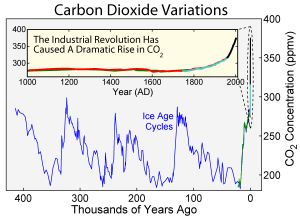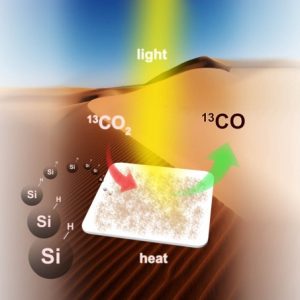Typically, when you burn a hydrocarbon fuel, you get waste products like CO2, a serious greenhouse gas. But what if we could turn CO2 back into fuel? A research team at Oak Ridge National Laboratory in Tennessee has made a breakthrough: they found a simple method to do just that. By embedding copper into nanospikes, they were able to make a powerful electrocatalyst that works something like many tiny lightning rods, which concentrate an electric field. This is able to turn CO2 into ethanol.
The reaction starts by reducing CO2 to carbon monoxide, CO. Then two CO molecules connect to form a dimer with the two carbon atoms bonded to each other. Finally, this dimer is reduced, removing an oxygen atom and gains hydrogen atoms. Although they initially believed this process would produce methanol, the final product is actually ethanol.

The structure of ethanol. This public domain image is from https://commons.wikimedia.org/wiki/File:Ethanol-2D-flat.png.
The process is fairly efficient, but not efficient enough to use on an industrial scale yet. The electrons have a yield of 63 percent, meaning only 27 percent of electrons will be “lost” during the reaction, mostly being taken up by hydrogen. The CO2 has a yield of 84 percent. The energy efficiency is not as good, only around 20 percent. On the positive side, the process only needs common materials, such as carbon, nitrogen, copper, and CO2.
It is hoped that this process will someday help reduce CO2 added to the atmosphere. Since it uses CO2 as a reagent, it would only add about as much to the atmosphere as it removes. The reaction could even work as efficient, clean energy storage – excess energy from renewable sources could be used to convert CO2 into ethanol, storing it as chemical energy for later use. However, it is still in development and has a long ways to go before it’s ready for large-scale use.
~ Nat Shipp
Sources:
Popular Mechanics – Meet the scientists turning CO2 into ethanol
Discover – Nanospikes Convert Carbon Dioxide Back Into Ethanol
Oak Ridge National Laboratory – Nano-spike catalysts convert carbon dioxide directly into ethanol
SciShow – Using Devil’s Milk to kill superbugs




